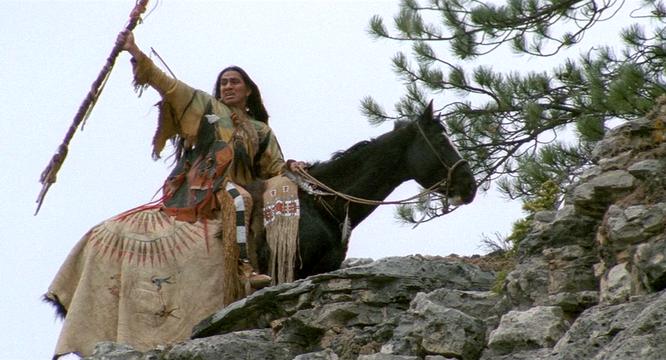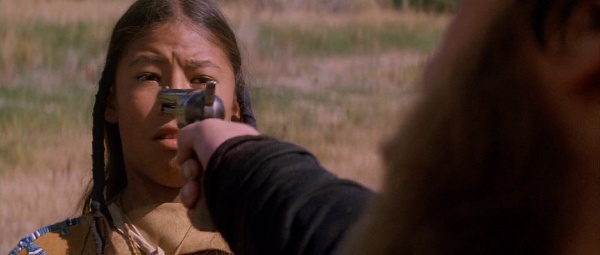Towards the middle of the movie
Dances With Wolves, the director, Kevin Costner, again utilizes the emotion of the audience. Costner does this again, through the use of pathos: music, sight, sound, and/or sensory images that appeal to emotion. For example, a scene where children are playing and laughing next to a crystal blue river, while they observe their tribes horses walking out of it. This scene is supposed to convince the audience that the Sioux Nation is just as human as the White man through the use of beauty and humane similarities. Coster constantly shows throughout this movie that the White man is selfish and has a lack of understanding. For example, Lieutenant Dunbar and the Sioux follow a buffalo herds tracks and come to discover the White man had killed and skinned the all of the herd. The White man only took the buffalos hides, while the Sioux would have used every part of the buffalo, showing that the white man is selfish. In the second half of the movie Costner shows the dramatic change of his character Lieutenant Dunbar to Dances with wolves. For example, Dunbar and Otter exchange war clothing for the sake of becoming closer with the tribe and a sign of respect. Dunbar eventually understands the Sioux Nation and finds there a peaceful people, only defending their land and their people. When He fully becomes Dances With Wolves, he sides with the Sioux over his own people to try to make the White man understand, but because of the large lack of understanding the White man has, they see him as a traitor. 

















No comments:
Post a Comment